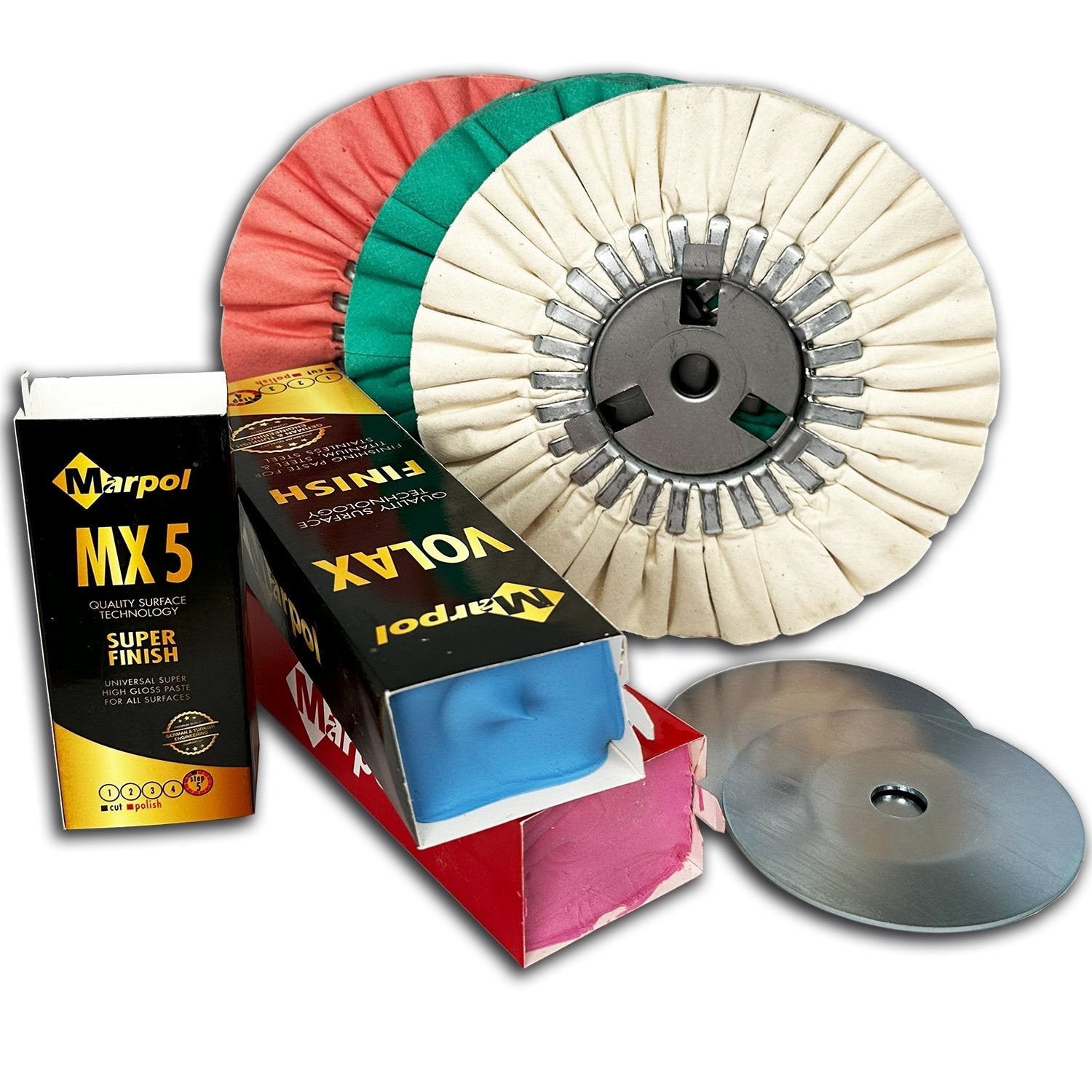Your Cart is Empty
Free Shipping over $150 (Excludes Oversized Products)
Free Shipping over $150 (Excludes Oversized Products)
Sanding Belts
Sanding Discs

Silicon Carbide Vs. Aluminum Oxide
by David Kranker 2 min read
When selecting a sanding belt for an application, your options depend on what material you will be working on and the desired type of finish. In this blog, we’ll compare silicon carbide and aluminum oxide, which are popular abrasives in the metalworking and woodworking industries thanks to their versatile performance and ability to deliver quality results.
Silicon Carbide Sandpaper
Silicon carbide is a hard and sharp abrasive, making it an ideal choice for cutting hard materials like metal, stone, paint, and wood finishes. (For example, you can use it to sand ceramic finishes off of wood floors.) It also does a great job on glass, plastic, and rubber, making it a popular solution in the automotive industry.
When the belt is in use, the friable black grains microfracture - meaning that they break down into smaller pieces that let the belt retain its cutting qualities even after continuous use. This quality makes it less suited for soft wood materials, as it won’t fragment effectively and renew its sharp edges.
Silicon carbide belts have a closed coat, meaning that they have optimal grain coverage. This feature is especially important when grinding hard metals, as the maximum amount of grain is applied to the hard material. Closed-coat abrasives are also ideal for finishing applications like lacquers and sealers to deliver a high-quality finish.
The non-contaminating properties of silicon carbide belts have resulted in their frequent use in the aerospace industry.
Aluminum Oxide Sandpaper
Aluminum oxide is a popular abrasive, especially in the woodworking industry. It fragments efficiently during the sanding process, allowing it to retain its cutting edges and extending the working life of the sanding belt. Coating options include:
- Closed Coat:The grains cover 90 to 95% of the belt surface, making closed-coataluminum oxide sanding belts appropriate for cutting ferrous and non-ferrous metal.
-
Open Coat:With grain coverage at around 60 to 65%,open coatingaluminum oxide sanding belts are best for softer woods and metals.
Unlike silicon carbide belts, aluminum oxide can only be used in dry applications, but this limitation has not stopped it from becoming one of the most popular and trusting sanding belt materials in multiple industries.
If you’re not sure which sanding belt will deliver the results you need or you have questions about all available options for your applications, the abrasive technicians at Fintech Industrial Abrasives can help you choose the product that meets or exceeds your expectations.
About Red Label Abrasives
With over 35 years of production experience, Red Label Abrasives combines superior abrasive products with unparalleled customer support. If you need help choosing the right sanding belt for your operation or even require a custom product designed for a specialty application, we can help. For more information or to speak to one of our experienced abrasive technicians, please contact us by filling out acontact form or by calling 844-824-1956.
ABOUT THE AUTHOR
David Kranker is a writer and creative maker who has been covering the abrasive industry on the Red Label Abrasives Blog since 2020. David spends his time continually researching sanding techniques to provide readers with the latest and greatest information. In his free time, David utilizes abrasives for many different home and auto projects at his home in Delton, MI.
Our Most Popular Abrasives

EdgeCore Ceramic Sanding Belts

EdgeCore Ceramic Flap Discs

Buffing Kit
Shop By Product Category





Why Choose Red Label?







